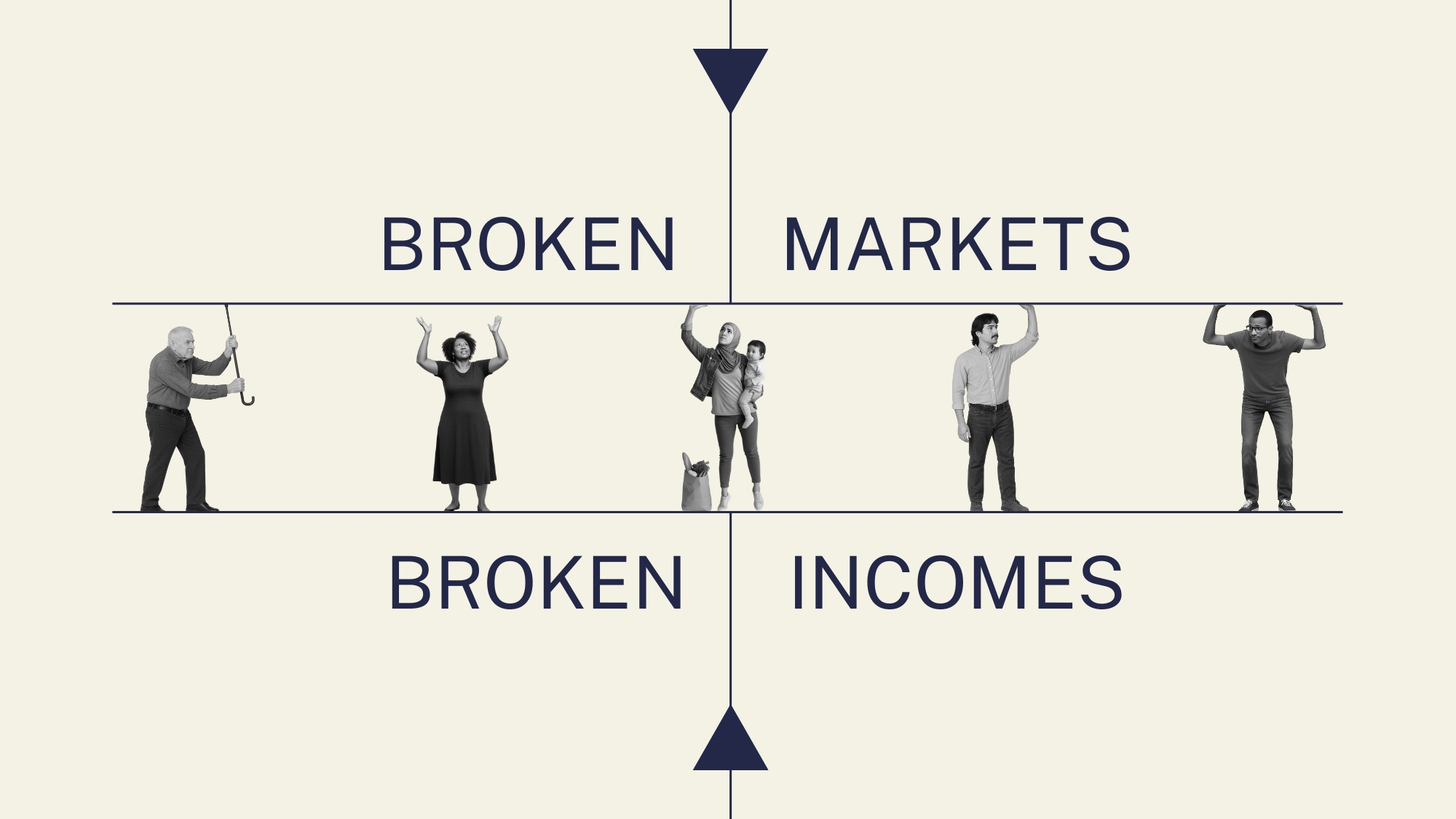
This report introduces a two-part framework, identifying 1) broken markets and 2) broken incomes as dual drivers of the affordability crisis. This framework assesses the forces driving up costs for Americans and is intended to equip policymakers with a diagnostic tool to better understand these dynamics and inform future policy decisions.
Read the full Affordability Framework
Visit link (opens in new tab):Read the report summary
Visit link (opens in new tab):| Broken Markets Three systemic failures make life unaffordable: | |
| Reason | What It Costs You |
| Gatekeepers Corporate power and weak governance constrain supply and increase prices. | Corporate concentration costs households $5,000 a year. Restrictive zoning slows economic growth, costing workers approximately $3,700 in lost income each year. |
| Fragmented Markets Market constraints prevent providers from scaling goods to the level needed to meet public demand. | Administrative bloat in the private health system wastes $528 billion a year. Rural hospital closures raise remaining nearby medical facilities’ prices by 3.6%. |
| Manipulated Signals Prices fail to reflect true costs and benefits because sellers obscure information, forcing others to pay more. | RealPage’s AI pricing algorithms increased impacted rents by $70/month. One estimate has future households paying an extra $70/month on their electricity bills to power AI data centers. |
| Broken Incomes Even when markets work, essentials remain unaffordable for three reasons: | |
| Reason | What It Costs You |
| Life‑cycle Mismatches Big costs arrive when earnings are low, in early career or when we are incapable of working. | A year of full-time child care for just one child ranges from $6,868 to $28,356. Without Social Security, 37% of seniors would be living in poverty. |
| Inequality Insufficient incomes and the high cost of being poor makes affordability worse. | Median wages have risen just 29% since 1979, while productivity rose 83%. Low-income families are forced to spend more hours navigating systems, paying a time tax. |
| Macroeconomic Trends Recessions have long-lasting consequences on people’s lives, and an inflation shock eats up wage gains. | New housing construction collapsed during the Great Recession, took eight years to only partially recover. Graduating into a recession decreases earnings for 10 to 15 years. |